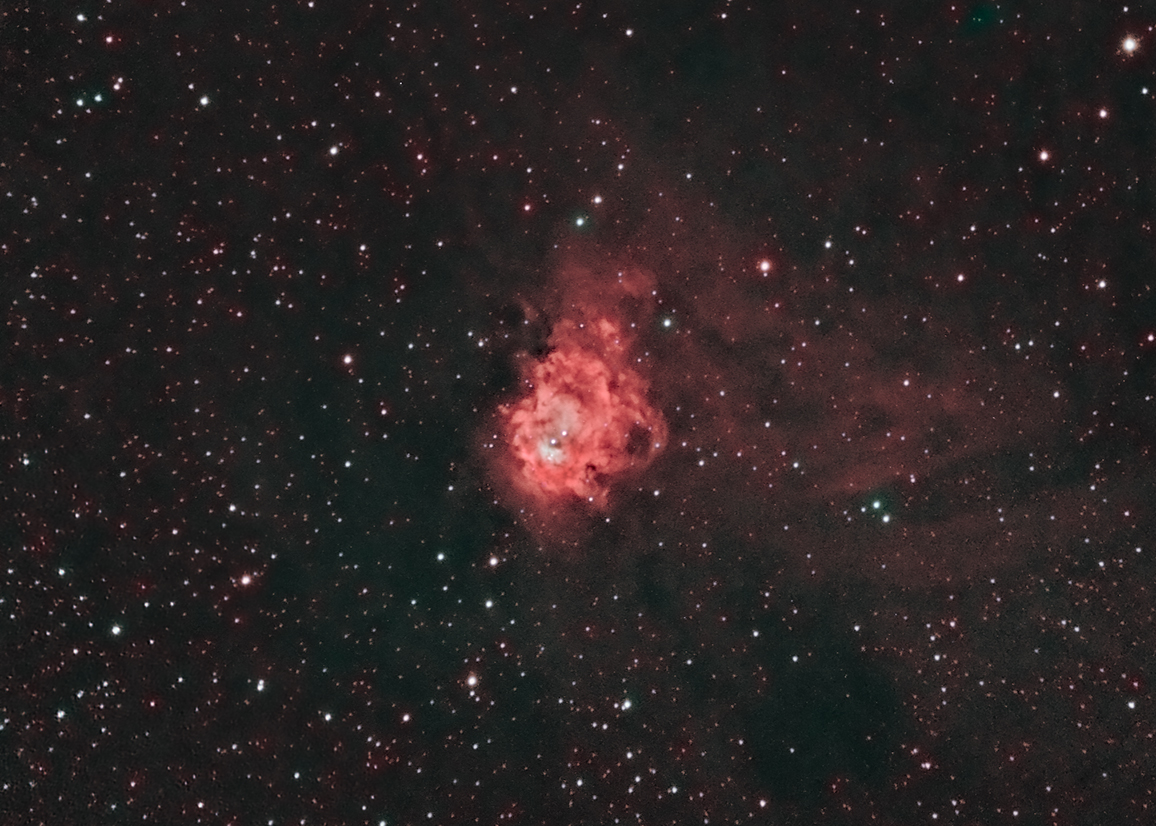
| Date: 2020/08/15 Observation place My permanent observatory in Longueuil in white light pollution zone |
Technical
| Telescope | Celestron Edge HD - Diameter 203mm (8``), focal length 2032mm, f / 10 |
| Focal reducer | f / 6.3 (63%) |
| Mount | Celestron CGEM |
| Imaging camera | Atik 383 L + monochrome regulated at -20o Celsius |
| Autoguiding camera | ZWO ASI 120MM with one optical splitter |
| Auto Guidance Accuracy (RMS) | 1,01 '' of arc RMS (2,02 '' of arc in total) |
| Image type | Ha (HaR-VsB) (Vs for synghetic green) Red layer with Ha and red filters |
| Exhibition | Ha (10 x 10 'bin 2 × 2), Red (20 x 2' bin 2 × 2), Blue (20 x 2 'Bin 2 × 2) |
| Image acquisition software | Maxim DL |
| Pretreatment | Maxim DL |
| Treatment | Photoshop and PixInsight |
| Specific treatment | Create a synthetic green image |
Object description
| Object type | Emission nebula |
| Constellation | Cepheus |
| Visual magnitude | unknown |
| Distance | 9100 light years |
| Diameter | 300 times the size of the solar system! |
| Dimension seen from Earth | 9 x 6 arc minutes |
| The NGC7538 nebula is a bright emission nebula in the constellation Cepheus. It is 9100 light years from Earth. Its size is 300 times that of our solar system! It is home to the largest protostar discovered. A protostar is a large mass formed by the contraction of gases from a giant molecular cloud in an interstellar medium mainly made up of hydrogen and helium. The protostellar phase is an early stage in the process of star formation. This nebula is therefore a region of active star formation. The NGC7538 nebula is near the Bubble Nebula (NGC7635) which is a favorite target for astrophotographers. It is for this reason that it is less photographed. But, it is a very beautiful nebula to observe. In my image, which was taken in a site of extreme light pollution (white area), we can see the very beautiful shades of the nebula in the color red. As it is an emission nebula which emits its signal mostly in hydrogen, I used my Hydrogen-Alpha (Ha) filter as a luminance image. At the same time, this filter is very effective in combating the significant light pollution of my observation site. To bring out the natural colors of the stars, I used an RGB image (with red, green and blue filters) by associating the red image with the image taken in Ha to find the red color of the stars and that of the nebula. Three hours of exposure in a 2 × 2 bin were used. The equivalent in 1 × 1 bin is 12 hours! To learn more about the 2 × 2 bin, see this link: bin_mode.htm |
| Richard Beauregard Sky Astro - CCD My impression "We cannot be alone in this gigantic universe" |
